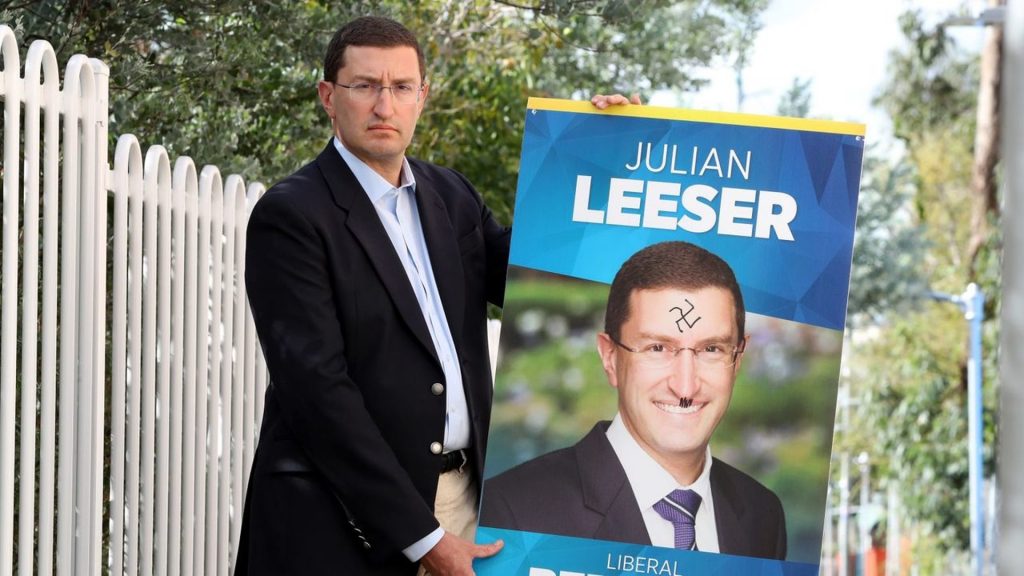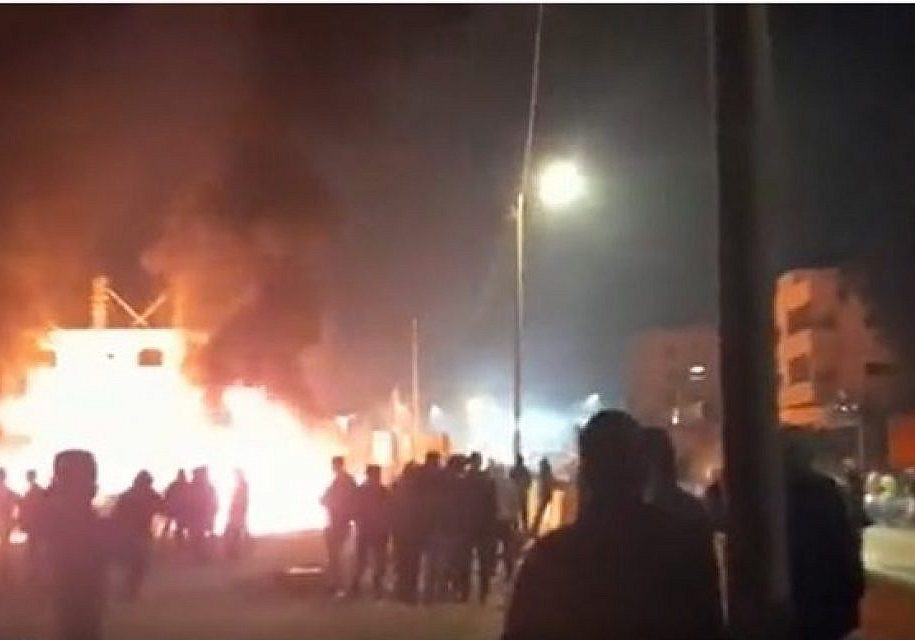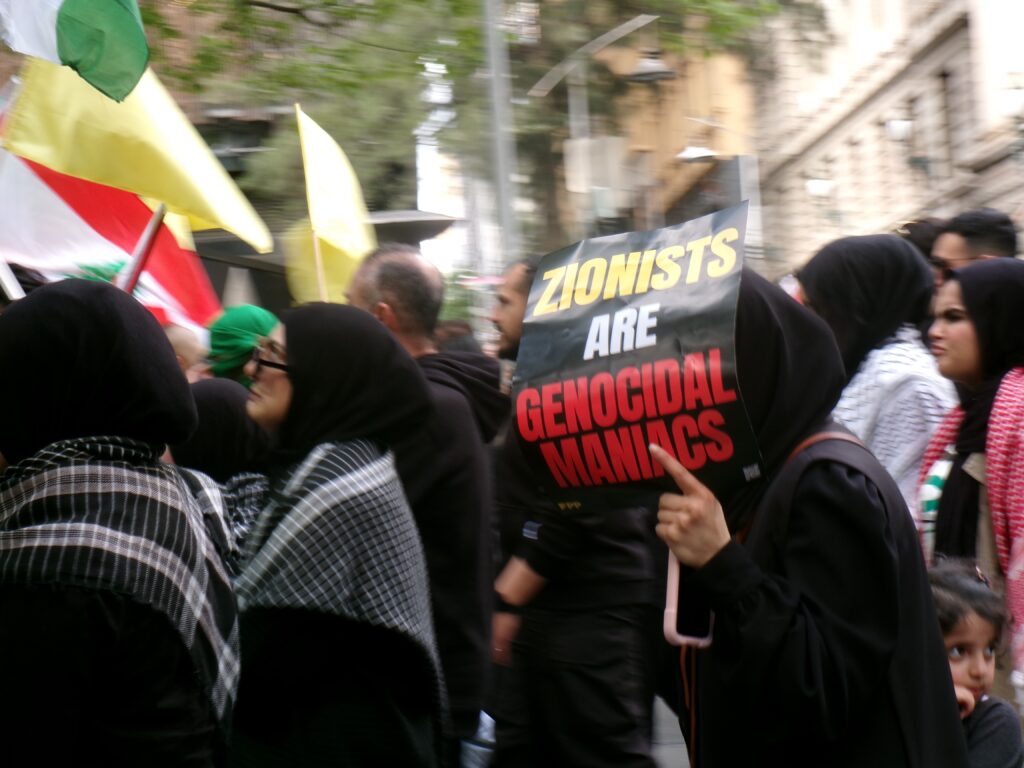FRESH AIR
Swastika: a dangerous cameo actor in the 2019 Australian election
May 10, 2019 | Naomi Levin

The swastika has made an all too frequent appearance during the 2019 Federal Election campaign.
From the Liberals to the Greens, candidates – Jewish and not – have had their campaign posters graffitied with Nazi-related imagery in the lead up to the May 18 vote.
This article catalogues the publicly recorded incidents and considers who is behind the graffiti and why.
At the time of writing, Liberals Josh Frydenberg and Julian Leeser – both of whom are Jewish – had reported Nazi imagery scrawled on their campaign posters. These included “Hitler” moustaches, swastikas and imagery long used to denigrate Jews, including dollar signs and devil horns.
Non-Jewish Greens’ candidates Adam Bandt, Larissa Waters, Steph Hodgins-May and Andrew Bartlett also removed election banners in Melbourne and Brisbane after they were defaced with swastikas.
Independent candidate Kerryn Phelps, who is Jewish, was alerted to a letter being distributed in her Sydney electorate opposing her candidacy and claiming Jews were spreading disease because they supposedly refuse to vaccinate; which is untrue. It also said Phelps was ineligible to contest the election because she holds Israeli citizenship, which she does not.
Separate from these incidences – but also worth noting – is that both Labor and the Greens have had to dump candidates or sanction staff members over antisemitic activity.
While exact statistics are difficult to come by, anecdotally, this problem appears to be significantly worse in this election than in the past Australian polls of recent decades.
If we are to take one positive from these deplorable events, it is that their repudiation has crossed party lines.
Senior Labor minister Mark Dreyfus publicly backed his political opponent Frydenberg tweeting “The vandalism of Josh Frydenberg’s posters is abhorrent. There is no place for antisemitism in political discourse, or in Australia.” Notably both men had family members who fled Europe due to Nazi persecution.
Dreyfus was backed by his Labor colleague Clare O’Neil who tweeted to Frydenberg “I am so sorry this happened – it’s vicious and offensive.”
Jewish Labor candidate Josh Burns also condemned the vandalism calling it “racist filth”, pointing the finger at the “rise of extremism and the far-right”.
Victoria Labor MP Philip Dalidakis condemned the vandalism of Greens’ Hodgins-May’s campaign posters. Dalidakis, who is Jewish, tweeted “outrageously insensitive to Holocaust survivors and their families, stupid in its ignorance and pathetic in reducing public policy debate to such low levels”.
There are two lines of exploration following these acts, which have so distressed the Jewish community and others who believe in protecting Australia’s safe, harmonious community. The first: who is responsible and will they be held to account? The second: why is this happening now?
Vandalising campaign posters is not a crime under the Electoral Act 1918, but states and territories have their own general vandalism offences, and then there is the question of vilification. Racial vilification is covered by the much-debated section 18C of the Commonwealth Racial Discrimination Act 1975, while both racial and religious vilification are covered by various state-based religious tolerance laws.
As many commentators have noted, there are limitations with many of these laws, including that most vilification complaints are dealt with as civil proceedings, rather than being treated as criminal matters.
This means the victim takes their complaint to a state-based equal opportunity body, however, to do this, the victim must be able to identify the perpetrator – which is highly unlikely in the case of vandalism. To our knowledge, no arrests have been made.
Additionally, according to academics Prof Katharine Gelber and Prof Luke McNamara, of the approximately 200 complaints of this nature lodged each year, only two per cent end up in court or before a tribunal, and of these, only half end in success for the victim.
To put that another way, ABC journalist Hagar Cohen recently reported that only 21 people have ever been convicted under hate crime laws in Australia and only three convictions have been recorded in Victoria where Frydenberg, the most high profile target, has been allegedly vilified.
Despite Frydenberg’s claim that the graffiti was a “criminal act”, it seems unlikely the vandal will ever face a magistrate.
This leads us to the second question, why is this happening now?
In her book Antisemitism: Here and Now, American academic Deborah Lipstadt argues global antisemitism has reached, what she calls, a “perfect storm”, with antisemitism rising across the political spectrum – from the European far-right, to Islamic State.
Today’s antisemitism, regardless of the origin, shares commonalities. Lipstadt summarises it well: “something to do with money, something to do with finance, that Jews will do anything and everything, irrespective of whom it harms or displaces or burdens. Both the right and the left share those kinds of stereotypes.”
Lipstadt’s contention is backed by numbers. A report released by Israeli’s Ministry for Diaspora Affairs in January showed global antisemitism reached record levels in 2018. Last year, 13 Jews were killed in antisemitic events. This year, we have already seen another fatality in a shooting at a Californian synagogue.
It is no coincidence that global antisemitism is growing while divisive political leaders gain notoriety in many liberal democracies. These leaders have mobilised, whether consciously or not, extremists who harbour antisemitic views.
On the right, we have seen extremist Brexiteers in the United Kingdom; the alt-right in the United States; and in France, the success of the National Front in presidential elections and rise of the yellow vest movement.
On the left, US politics is grappling with the extreme views of new congresswomen Alexandria Ocasio-Cortez and Ilhan Omar , while UK Labour leader Jeremy Corbyn has failed to successfully confront the repeated scandals over antisemitism within his party.
Australia has not escaped this political reality. Independent senator Fraser Anning has shamelessly appeared at local far-right demonstrations and continues to spread anti-Muslim hate. While it has largely flown under the media’s radar, on the left, Greens candidates have been appearing at rallies alongside those sympathising with Middle Eastern terrorist groups, compared Australian politicians to Nazis and called for partial boycotts of Israel, a democratic ally of Australia.
There are few clues provided as to the identity of the perpetrators of the recent Nazi-related vandalism, therefore any accusations, like that of Burns who declared the vandalism was the work of the “far right”, are guesses. The evidence points to a range of perpetrators from different political persuasions.
One of the derogatory marks scrawled on Frydenberg’s poster was “right wing fascist”. It would be logical to assume that someone identifying with the far right would not consider this damaging or hurtful.
Logic would also indicate it is likely that those wanting to denigrate the Greens would probably come from the right fringe.
What is clear is that there are undesirable elements on both the left and right in Australian politics. While it is unlikely to happen, a prosecution would go a long way in sending a message to vandals and those seeking to emulate them that their scrawls are dangerous and damaging to community harmony.
As Leeser wrote in a response to the vandals on his Facebook page, Australian Jews have always been lucky to be free to practice their faith without discrimination, but the current situation suggest that this should not be taken for granted.
It is incumbent on all political candidates to implore their supporters to play the ball, not the man – disagree with ideas or policies, but keep identity out of it.
Tags: Antisemitism, Australia, election, Greens, Labor Party, Liberal Party
RELATED ARTICLES

‘Time’s up for talk’: Joel Burnie discusses Antisemitism Envoy’s report on Sky News

‘Optimism’ for Hamas to ‘exile’ their power and create a permanent ceasefire with Israel: Joel Burnie on Sky News

Australian government’s response to Iran-Israel conflict ‘disappointing’: Paul Rubenstein on Sky News




















